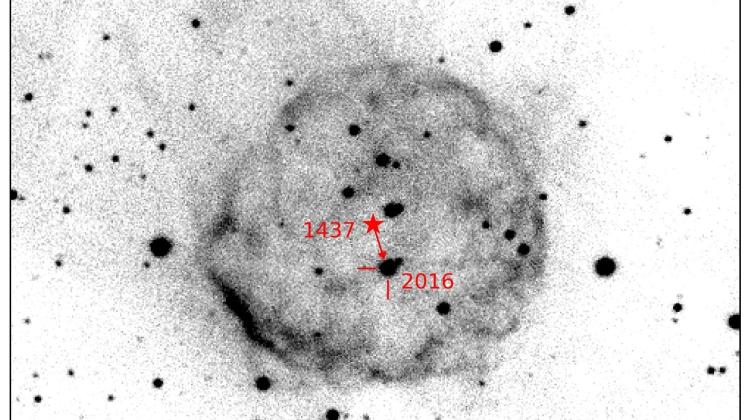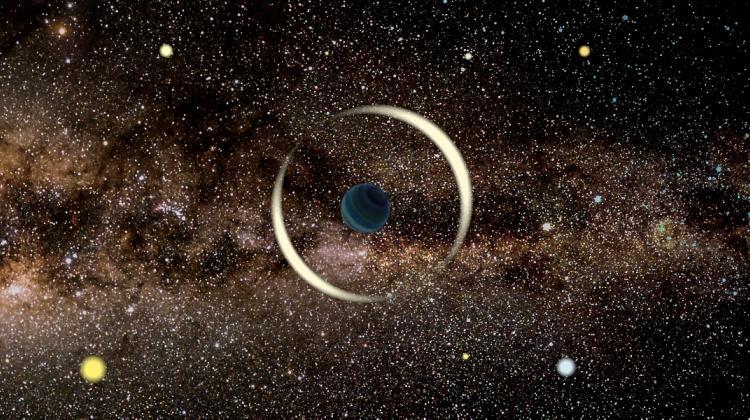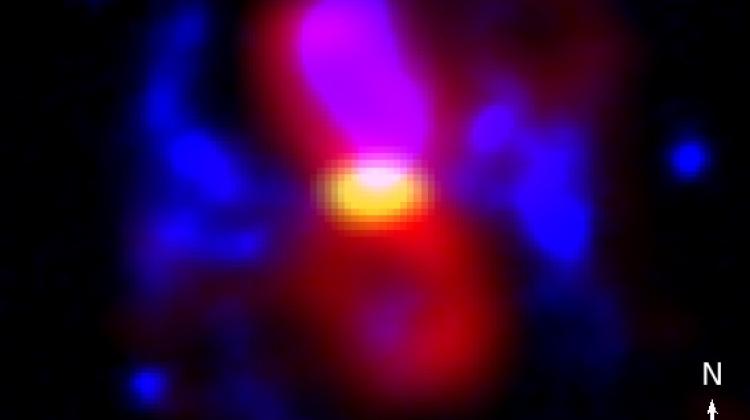Researchers located a nova observed in the Middle Ages by Koreans

Almost 600 years ago, Korean scholars studying the sky saw a star that was visible only for a dozen days. Scientists have now managed to locate this old nova. Polish astronomers have made an important contribution to the research project.
The phenomenon, visible on March 11, 1437 in the constellation of Scorpio, was recorded in the chronicles of the Royal Astrologers of the Korean Empire. Its description allowed today\'s astronomers to determine that it was an explosion of a classic nova. However, it was not known to which binary star this event should be tied.
The "old" nova has just been located, thanks to research of scientists led by by Michael Shara from the American Museum of Natural History. The study was presented Friday in the prestigious journal Nature. Significant contributors were: Krystian Iłkiewicz and Prof. Joanna Mikołajewska from the Nicolaus Copernicus Astronomical Center PAS; Katarzyna Drozd from the Nicolaus Copernicus Astronomical Center PAS also participated in the research. The Polish contribution included obtaining the complete spectroscopy, determining the orbital period, determining the rotation period of the object, and participating in the determination of the object\'s own motion, which allowed to identify the nova. Polish researchers also obtained the images used to that end.
It is the first time in history that an old nova, the explosion of which had been recorded in Chinese, Korean or Japanese chronicles over the course of 2,500 years has been located with 100% certainly - the researchers emphasised in a release. The success was possible after re-reading and interpreting the records in the Korean chronicle, which meant expanding the scope of the search and helped locate the remains of the nova (ejected gas shell) and the binary system in its vicinity.
"Novae are important because they are the main supplier of carbon and lithium in space. Novae explain the entire lithium observed in the Universe, and de facto solve the cosmological problem with lithium because stellar nucleosynthesis cannot explain it in its entirety. That is why understanding novae is very important" - Prof. Joanna Mikołajewska from the Nicolaus Copernicus Astronomical Center PAS in Warsaw explained in an interview with PAP.
Prof. Mikołajewska added that this was the first identified with 100 percent certainty nova observed in antiquity and medieval times, in the time preceding the activity of the 16th-century Danish astronomer, Tycho Brahe.
The latest observations were made with the 11-meter SALT telescope in South Africa, smaller telescopes at the SAAO Observatory in South Africa (1 meter, 1.7 meter and 1.9 meter diameter) and the 1 meter Swope Telescope at the Las Campanas Observatory in Chile. In addition, an archival photographic film from 1923 from the Harvard Observatory in Peru turned out to be useful. By comparing the position of the system in 1923 and now, astronomers measured the speed with which the star moves in the sky. They then calculated its movement back to 1437, and it turned out that its position was right in the centre of the shell.
On the other hand, archival films from the 1940s allowed to determine that the former nova is now a dwarf nova (it experiences similar explosions as a nova, but on a smaller scale). This proves that classic novae, dwarf novae and nova-like variables are actually the same class of objects, as was previously suggested. After the explosion, nova becomes a nova-like variable and then a dwarf nova. Then, after a possible phase of total sleep, it returns as a nova-like variable and can become a nova again. It can do that many times, even hundreds of thousands of times over billions of years.
"That old nova is now a cataclysmic variable. It is very important because it allows us to link the different phases of systems that explode as novae. There is no doubt that nova-like variables, cataclysmic variables and novae are the same objects" - said Prof. Mikołajewska.
Unfortunately, such cycles are very difficult to trace for astronomers - they require very long periods of observation (even many generations of observers). Therefore, linking a classical nova explosion recorded 580 years ago to a dwarf nova surrounded by remnants of the former explosion is very valuable and constitutes an important step in the study of the evolution of these objects.
Nova explosion can be compared to a giant hydrogen bomb. It occurs in binary star systems composed of a star similar to the Sun and a white dwarf. The white dwarf takes away hydrogen-rich matter from the shell of his neighbour. When the hydrogen layer on the surface of the white dwarf reaches the critical mass, then the fusion explosion occurs and causes shell ejection. The system becomes 300,000 times brighter than the Sun for a period of several days or months. The process can be repeated over months or even millennia.
Thy study was co-funded by the Harmonia grant of the National Science Centre.
Krzysztof Czart (PAP)
cza/ zan/ kap/
tr. RL
Przed dodaniem komentarza prosimy o zapoznanie z Regulaminem forum serwisu Nauka w Polsce.


















